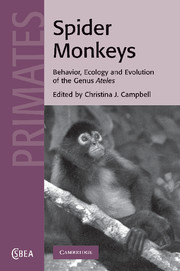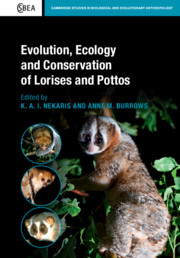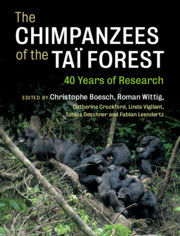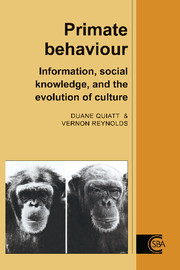Spider Monkeys
Spider monkeys are one of the most widespread New World primate genera, ranging from southern Mexico to Bolivia. Although they are common in zoos, spider monkeys are traditionally very difficult to study in the wild, because they are fast moving, live high in the canopy and are almost always found in small subgroups that vary in size and composition throughout the day. This book is an assimilation of both published and previously unpublished research. It is a comprehensive source of information for academic researchers and graduate students interested in primatology, evolutionary anthropology and behavioral ecology and covers topics such as taxonomy, diet, sexuality and reproduction, and conservation.
- Comparative studies from multiple fields allow the reader to examine genus-wide similarities and differences
- Information on spider monkey taxonomy, distribution and conservation status enables access to this information from one source
- Includes 14 chapters that review up-to-date reviews of currently available data as well as new, previously unpublished literature
Reviews & endorsements
'A book concentrating on spider monkeys is long overdue and this one succeeds in consolidating and reviewing current information and, in a few chapters, presents new information available from long-term field studies.' Primate Eye
'… useful reference for academic researchers and graduate students.' Mammalia
Product details
April 2011Adobe eBook Reader
9780511889233
0 pages
0kg
This ISBN is for an eBook version which is distributed on our behalf by a third party.
Table of Contents
- 1. Introduction Christina J. Campbell
- Part I. Taxonomy, Phylogeny and Evolution:
- 2. Morphology and evolution of the spider monkey, genus Ateles Alfred Rosenberger, Lauren Halenar, Siobanán B. Cooke and Walter Hartwig
- 3. The taxonomic status of spider monkeys in the 21st century Andrew Collins
- Part II. Ecology:
- 4. Diets of wild spider monkeys Anthony Di Fiore, Andres Link and J. Lawrence Dew
- 5. Factors influencing spider monkey habitat use and ranging patterns Robert B. Wallace
- 6. Seed dispersal J. Lawrence Dew
- Part III. Behavior and Reproduction:
- 7. Locomotion and positional behavior of spider monkeys Dionisios Youlatos
- 8. Communication in spider monkeys: the function and mechanisms underlying the use of the whinny Gabriel Ramos-Fernández
- 9. Social interactions, social relationships and the social system of spider monkeys Filippo Aureli and Colleen Schaffner
- 10. Spider monkey reproduction and sexual behavior Christina J. Campbell and K. Nicole Gibson
- 11. Immaturity in spider monkeys: a risky business Laura Greer Vick
- 12. Demography and group composition of spider monkeys Yukiko Shimooka, Christina J. Campbell, Anthony Di Fiore, Annika M. Felton, Kosei Izawa, Andres Link, Akisato Nishimura, Gabriel Ramos-Fernández and Robert B. Wallace
- Part IV. Interactions with Humans:
- 13. Spider monkey conservation in the 21st century: recognizing risks and opportunities Gabriel Ramos-Fernández and Robert B. Wallace
- 14. The ethnoprimatology of the spider monkeys: from past to present Loretta Cormier and Bernardo Urbani.








